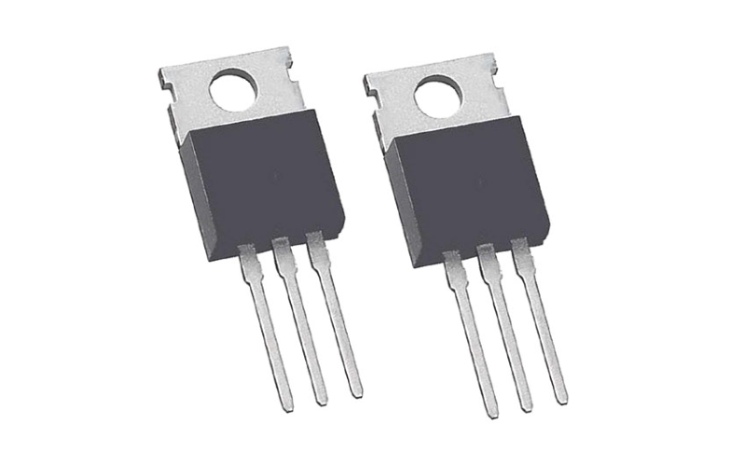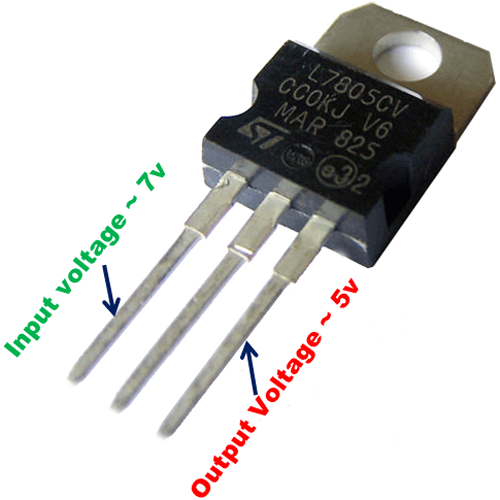
A voltage regulator is a simple and cost-effective device that can change the input voltage to a different level at the output and can maintain a constant output voltage even in varying load conditions. Almost all electronic devices from your cell phone charger to air conditioners to complex electromechanical device uses a voltage regulator to provide the different DC voltages to different components in the device. Apart from it, all the power supply circuits use voltage regulator chips.
For example, in your smartphone, a voltage regulator is used to step-up or step-down the battery voltage for the components (like backlight LED, Mic, Sim Card, etc.) that requires higher or lower voltage than the battery. Choosing the wrong voltage regulator can result in compromised reliability, higher power consumption, and even fried components.
So in this article, we will discuss some important parameters to keep in mind while selecting a voltage regulator for your project.
Important Factors for Voltage Regulator Selection
1. Input Voltage and Output Voltage
The first step towards choosing a voltage regulator is knowing about the input voltage and output voltage that you will be working with. Linear voltage regulators need input voltage that is higher than the rated output voltage. If the input voltage is less than the desired output voltage, then it leads to the condition of insufficient voltage that causes the regulator to drop out and provide unregulated output.
For example, if you are using a 5V voltage regulator with a 2V dropout voltage, then the input voltage should be least equal to the 7V for a regulated output. Input voltage below 7V will result in an unregulated output voltage.

There are different type of voltage regulators for different input and output voltage range. For example, you will need a 5V voltage regulator for Arduino Uno and a 3.3V voltage regulator for ESP8266. You can even use a variable voltage regulator that can be used for a range of output applications.
2. Dropout Voltage
Dropout voltage is the difference between input and output voltage of the voltage regulator. For example, min. The input voltage for 7805 is 7V, and the output voltage is 5V, so it has a dropout voltage of 2V. If the input voltage goes below, the output voltage (5V) + dropout voltage (2V) will result in an unregulated output that can damage your device. So before selecting a voltage regulator, check the dropout voltage.
Dropout voltage varies with voltage regulators; for example, you can find a range of 5V regulators with different dropout voltage. Linear regulators can be extremely efficient when they are operated with a very low input dropout voltage. So if you are using a battery as a power source, then you can use LDO regulators for better efficiency.
3. Power Dissipation
Linear voltage regulators dissipate more power than switching voltage regulators. Excessive power dissipation can cause battery drain, overheating, or damage to the product. So if you are using a linear voltage regulator, first calculate the power dissipation. For linear regulators, power dissipation can be calculated by:
Power = (Input Voltage – Output Voltage) x Current
You can use the switching voltage regulators instead of linear voltage regulators to avoid the power dissipation problem.
4. Efficiency
Efficiency is the ratio of output power to input power that is proportional to the ratio of the output voltage to the input voltage. So the efficiency of Voltage regulators is directly limited by the dropout voltage and quiescent current because of the higher the dropout voltage, the lower the efficiency.
For higher efficiency, drop out voltage and quiescent current must be minimized, and the voltage difference between input and output must be minimized.
5. Voltage Accuracy
The overall accuracy of a voltage regulator depends on line regulation, load regulation, reference voltage drift, error amplifier voltage drift, and temperature coefficient. Typical linear regulators usually have an output voltage specification that guarantees the regulated output will be within 5% of nominal. So if you are using the voltage regulator to power the digital ICs, then 5% tolerance is not a big concern.
6. Load Regulation
Load regulation is defined as the circuit’s ability to maintain a specified output voltage under varying load conditions. Load regulation is expressed as:
Load Regulation = ∆Vout/ ∆Iout
7. Line Regulation
Line regulation is defined as the circuit’s ability to maintain the specified output voltage with the varying input voltage. Line regulation is expressed as:
Load Regulation = ∆Vout / ∆Vin
So for selecting a proper voltage regulator for any application, one should keep all the above factors in consideration,





